The Oribi, scientifically labeled Ourebia Ourebi is the largest type of antelope in the small antelope category, having rufous golden orange upperparts and white underparts and inner thighs that go all the way to the front of the breast. Has a long neck, medium-sized ears, and a short tail with a distinct black tip.
Only rams have horns, which are short, upright, and somewhat ridged. They normally appear in pairs or small groups of one ram who is very territorial and up to four ewes. Communal dung piles, as well as secretions from the preorbital glands and other glands pasted on grass stalks, serve a territorial marking function. After fleeing a short distance, Oribi will turn to look back at the source of the noise.
When disturbed, they often produce a sharp whistle or sneeze and flee quickly, with occasional stiff-legged hops revealing the black-tipped tail. They are confined to their territory and seldom leave it, even under extreme stress.
When disturbed, they lie down on tall grass with their heads upright, making it difficult to point them out.
Oribi: Species profile
COMMON NAME: Oribi
SWAHILI NAME: Taya or kasia or vihea
SCIENTIFIC NAME: Ourebia ourebi
TYPE: Mammal
FOOD: Oribis are herbivores and mainly feed on grasses, leaves, shoots, and herbs. They are selective grazers and browsers, choosing the most nutritious vegetation available in their habitat.
HABITAT: Oribis are found in a variety of habitats, including grasslands, savannas, wetlands, and bushy areas. They prefer areas with tall grasses and dense vegetation for cover, but they can also adapt to open spaces as long as there is sufficient food and water.
SIZE: Oribis are small to medium-sized antelopes. They have a shoulder height of about 50-60 centimeters (20-24 inches) and a body length of approximately 90-110 centimeters (35-43 inches). Adult males, known as rams, are slightly larger than females, known as ewes.
AVERAGE LIFE SPAN IN THE NATURAL HABITAT: In the wild, oribis have an average lifespan of around 10-12 years. However, some individuals have been known to live up to 15 years.
ACTIVE: Oribis are primarily diurnal, meaning they are active during the day. They are agile and swift runners, capable of reaching high speeds when necessary. They are also known for their leaping ability, which helps them navigate through their grassland habitats.
GESTATION PERIOD: The gestation period of oribis lasts approximately 6-7 months. After this period, a single calf is born, which is able to stand and walk within a short time. The calf remains hidden in vegetation for protection.
WEIGHT: The weight of oribis varies depending on their sex. Adult males typically weigh between 12-22 kilograms (26-48 pounds), while adult females usually weigh around 10-17 kilograms (22-37 pounds).
SIZE COMPARISON TO A 6-FT MAN: Oribis are significantly smaller than a 6-ft man. With a shoulder height of about 50-60 centimeters (20-24 inches), they stand at roughly half the height of an average human. Their slender build and graceful appearance make them well adapted to their grassland habitats.
Unique Physical Features:
The Oribi is a small and graceful antelope species that is found in various parts of Africa. Here are some details about the appearance of the Oribi:
Size: Oribis are relatively small antelopes, with males typically larger than females. They stand at an average shoulder height of around 55 to 65 centimeters (22 to 26 inches). The head and body length of an Oribi ranges from 90 to 110 centimeters (35 to 43 inches).
Weight: Oribis are lightweight animals, with males weighing between 15 to 22 kilograms (33 to 49 pounds), while females are slightly lighter, ranging from 12 to 17 kilograms (26 to 37 pounds).
Coat: The Oribi’s coat is short and dense, featuring a reddish-brown to yellowish-brown color on the upper body. The underparts, including the belly and inner legs, are generally white. Some individuals may have a faint pattern of lighter stripes running along the back.
Markings: Oribis have distinct markings on their face. They typically possess a dark patch extending from the inner corner of the eye to the nose, along with a black stripe running down the center of the face. The ears are slender and elongated, often displaying a light-colored fringe.
Horns: Both males and females possess horns, but those of the males are larger and more robust. The horns are ridged and slightly S-shaped, curving backward. They can grow up to 20 to 30 centimeters (8 to 12 inches) in length.
Distinctive Features: Oribis are known for their slender build and elongated legs, which contribute to their agile and swift movements. They have a delicate appearance, with a well-proportioned body and a gentle facial expression.
The Oribi’s appearance reflects its adaptation to its grassland and savannah habitats. Its small size and light build enable it to navigate through dense vegetation and escape from predators. The subtle coloration of its coat provides camouflage in the grassy environments it inhabits.
Observing the Oribi in its natural habitat is a captivating experience, as these elegant antelopes showcase their unique appearance and behavior.
Habitat and Range:
The Oribi is predominantly found in the grasslands, savannahs, and open plains of sub-Saharan Africa. They prefer areas with short grasses and scattered shrubs, providing them with both cover and access to their preferred food sources.
Feeding Habits:
Oribis are herbivores, primarily feeding on grasses, herbs, leaves, and shoots. They have a selective feeding behavior, carefully choosing the most nutritious parts of plants. Their ability to adapt to different grassland habitats allows them to thrive even in areas with seasonal variations in vegetation.
Social Behavior:
The Oribi, a small antelope species native to Africa, exhibits interesting behaviors that are essential for its survival in its grassland and savannah habitats. Here are some key aspects of the Oribi’s behavior:
Territoriality: Oribis are known to be territorial animals, with both males and females establishing and defending their territories. They mark their territories using scent markings and visual signals, such as dung piles and glandular secretions. These territorial boundaries serve to protect resources, including feeding areas and potential mates.
Solitary Lifestyle: Oribis are primarily solitary animals, although they may form pairs or small family groups consisting of a male, a female, and their offspring. They maintain their independence and often forage alone. However, they may come together in loose aggregations in areas with abundant food resources or during the mating season.
Alert and Vigilant: Oribis have excellent senses of hearing, sight, and smell, which are crucial for their survival. They are vigilant animals, constantly scanning their surroundings for potential threats. When alarmed, they emit a sharp whistle-like alarm call to alert others in the vicinity.
Fast and Agile: Oribis are known for their remarkable speed and agility. When startled or pursued by predators, they can perform impressive leaps and bounds, reaching heights of up to 2 meters (6.5 feet) and covering distances of up to 13 meters (43 feet). These evasive maneuvers help them escape from predators and navigate through their grassland habitats efficiently.
Feeding Habits: Oribis are herbivores with a diet primarily consisting of grasses. They are selective grazers, feeding on the most nutritious parts of grass blades. They may also browse on leaves, herbs, and young shoots when grass is scarce. Oribis have adapted to obtain moisture from their food, allowing them to survive in arid environments with limited water sources.
Mating and Reproduction: During the mating season, males compete for access to females through displays of strength and dominance. They engage in sparring bouts, where they lock horns and push against each other to establish dominance hierarchies. After a gestation period of around six to seven months, a single calf is born. The female hides the calf in dense vegetation to protect it from predators, visiting it periodically to nurse.
Nocturnal Activity: Oribis are primarily crepuscular, meaning they are most active during the early morning and late afternoon hours. This activity pattern allows them to avoid the intense heat of the day and reduces their exposure to predators. They may also exhibit nocturnal behavior in areas where human disturbance is high.
These behavioral traits enable the Oribi to survive and thrive in its grassland habitat. Their territoriality, agility, and keen senses contribute to their ability to find food, avoid predators, and successfully reproduce.
Conservation Status:
The Oribi is currently listed as a species of least concern by the International Union for Conservation of Nature (IUCN). However, localized threats such as habitat loss, fragmentation, and poaching can impact their populations in certain regions. Efforts are underway to protect their natural habitats and implement sustainable land management practices to ensure their long-term survival.
Ourebia Ourebi
The Ourebia Ourebi (Oribi), with its slender physique, striking markings, and adaptation to grassland habitats, is a captivating and important species in the African ecosystem. Its ability to thrive in the open plains highlights the incredible diversity of antelope species in the region. By raising awareness, supporting conservation efforts, and promoting sustainable practices, we can help preserve the habitats and ensure the future survival of the Oribi and other remarkable wildlife species.
Oribi Adaptations
The Oribi, a small antelope species native to Africa, has developed various adaptations that help it thrive in its grassland and savannah habitats. These adaptations are essential for its survival and include the following:
1. Agile and Swift: The Oribi has a slender body and long, slender legs, which contribute to its exceptional agility and swiftness. Its lightweight build enables it to navigate through dense vegetation with ease, allowing it to escape from predators quickly and efficiently.
2. Camouflage: The Oribi’s coat provides effective camouflage in its grassland habitat. Its reddish-brown to yellowish-brown coloration blends seamlessly with the surrounding grasses, making it difficult for predators to spot. This camouflage helps the Oribi remain hidden and increases its chances of survival.
3. Enhanced Vision and Hearing: Oribis have large, prominent eyes positioned on the sides of their head, providing them with a wide field of vision. This adaptation allows them to detect potential threats from various directions. They also have keen hearing, enabling them to detect the slightest sounds of approaching predators or other disturbances.
4. Speed and Leaping Ability: Oribis possess remarkable speed and leaping ability. When threatened, they can sprint at high speeds and execute powerful leaps and bounds, enabling them to quickly evade predators or navigate through challenging terrain. These agile movements are crucial for their survival in open grasslands where cover may be limited.
5. Selective Grazing: Oribis are selective grazers, meaning they carefully choose the most nutritious parts of grasses to feed on. This adaptation allows them to obtain maximum nutrition from their diet, even in areas with limited food resources. Their digestive system has evolved to efficiently process and extract nutrients from grasses, enabling them to thrive in grassland habitats.
6. Water Conservation: Oribis have adaptations that allow them to conserve water in their bodies. They obtain a significant portion of their moisture from the vegetation they consume, reducing their reliance on external water sources. This adaptation enables them to survive in arid environments where water availability may be limited.
7. Territorial Behavior: Oribis exhibit territorial behavior, marking and defending their territories from intruders. This adaptation helps them secure valuable resources such as feeding areas and potential mates. By establishing and defending their territories, they increase their chances of survival and reproductive success.
These adaptations collectively contribute to the Oribi’s ability to survive in grassland and savannah environments. Their agility, camouflage, sensory abilities, and specialized feeding behaviors enhance their chances of avoiding predators, finding food, and successfully reproducing.
Best place to see Oribis in Tanzania
If you’re interested in seeing Oribis in Tanzania, there are a few key locations where you have a good chance of spotting these graceful antelopes. Here are some recommended areas to visit:
1. Serengeti National Park:
As one of Tanzania’s most renowned wildlife reserves, the Serengeti offers an excellent opportunity to see Oribis. Explore the open grasslands and woodland areas, particularly in the central and western regions of the park. Oribis are often found grazing in the grassy plains, where they can blend in with their surroundings.
2. Ngorongoro Conservation Area:
This UNESCO World Heritage Site is home to diverse wildlife, and Oribis can be found here as well. Explore the Ngorongoro Crater and surrounding highlands, where the Oribis thrive in the grassy areas. Keep an eye out for them in the open plains and near water sources.
3. Ruaha National Park:
Located in southern Tanzania, Ruaha National Park is known for its remote and untouched wilderness. Oribis can be spotted in the open grasslands and miombo woodlands of the park. Embark on game drives or guided walking safaris to increase your chances of encountering these elusive antelopes.
4. Selous Game Reserve:
As one of the largest game reserves in Africa, Selous offers a vast and diverse landscape where Oribis can be found. Explore the woodlands, grassy plains, and riverine areas of the reserve. The varied habitats provide suitable conditions for Oribis to thrive and roam freely.
5. Tarangire National Park:
Located in northern Tanzania, Tarangire is known for its large elephant herds, but it is also a habitat for Oribis. Explore the park’s savannah and riverine areas, where Oribis graze on the lush grasses. Visit during the dry season when wildlife concentrates around water sources, increasing your chances of spotting Oribis.
When visiting these locations, it’s best to embark on game drives with experienced guides who have a good knowledge of the area and the behavior of Oribis. They can help you navigate the terrain and increase your chances of encountering these beautiful antelopes.
Remember to maintain a respectful distance and observe wildlife from a safe and responsible manner. This ensures the well-being of the animals and allows for a memorable and enjoyable wildlife viewing experience.
Oribi Safari tips
If you’re planning a safari to observe Oribis, here are some helpful tips to enhance your experience:
1. Choose the Right Time of Day: Oribis are most active during the early morning and late afternoon hours when temperatures are cooler. Plan your safari to coincide with these times, known as the golden hours, to increase your chances of spotting Oribis in action.
2. Use Binoculars and a Camera: Oribis are relatively small antelopes, so it’s beneficial to have a pair of binoculars or a camera with a zoom lens. This allows you to observe them closely and capture detailed photographs without disturbing their natural behavior.
3. Wear Appropriate Clothing: When going on a safari, wear neutral-colored clothing that blends with the environment. This helps you camouflage and reduces the chances of alarming the Oribis. Avoid bright colors or patterns that could startle or distract the animals.
4. Maintain Silence and Patience: Oribis are wary creatures, and sudden noises or movements can cause them to flee. Stay quiet and patient while observing them, allowing them to become comfortable with your presence. This patience can lead to more rewarding wildlife encounters.
5. Follow the Guidance of Your Guide: On a safari, you’ll likely have an experienced guide accompanying you. Follow their instructions and listen to their insights about Oribis. They can share valuable information about their behavior, habitat, and help you spot them in the wild.
6. Explore Varied Habitats: Oribis inhabit different types of habitats, including grasslands, woodlands, and savannahs. Explore a variety of landscapes to increase your chances of encountering Oribis. Your guide can suggest areas where these antelopes are commonly found.
7. Observe from a Distance: It’s crucial to respect the natural behavior of Oribis and not disturb them. Maintain a safe and respectful distance to avoid causing stress or altering their behavior. This allows you to observe them without intruding on their space.
8. Be Mindful of Other Wildlife: While searching for Oribis, keep an eye out for other wildlife species in the area. Tanzania is home to a diverse range of animals, and you may have the opportunity to observe other fascinating species during your safari.
Remember, wildlife sightings are never guaranteed, as animals roam freely in their natural habitats. However, with patience, proper preparation, and a knowledgeable guide, you increase your chances of encountering Oribis and enjoying a memorable safari experience
Frequently Asked Questions about Oribis
1. What is an Oribi?
The Oribi (Ourebia ourebi) is a small antelope species found in Africa. It is known for its slender body, long legs, and reddish-brown to yellowish-brown coat, which provides effective camouflage in grassland habitats.
2. Where do Oribis live?
Oribis are native to various regions of Africa, including East Africa, West Africa, and parts of southern Africa. They inhabit grasslands, savannahs, woodlands, and other open habitats with suitable vegetation for grazing.
3. What do Oribis eat?
Oribis are herbivores, primarily feeding on grasses, leaves, shoots, and herbs. They are selective grazers, meaning they choose the most nutritious parts of plants to consume. This adaptation helps them maximize their nutrient intake in habitats with limited food resources.
4. How do Oribis communicate?
Oribis use various methods to communicate with each other. They produce a range of vocalizations, including barks, whistles, and snorts, to signal alarm or communicate with their group members. They also use scent markings and visual displays to establish territories and communicate reproductive readiness.
5. Are Oribis social animals?
Oribis are generally solitary or live in small groups consisting of a male, female, and their offspring. However, during favorable feeding conditions or mating seasons, they may gather in larger herds. Male Oribis are territorial and mark their territories using scent glands and visual displays.
6. What are the predators of Oribis?
Oribis face predation from various carnivores, including lions, leopards, cheetahs, hyenas, and wild dogs. They rely on their agility, speed, and camouflage to evade predators. When threatened, Oribis can perform impressive leaps and bounds to escape.
7. Do Oribis migrate?
Oribis are non-migratory animals, but their movements can be influenced by changes in food availability and water sources. They may undertake seasonal movements within their home range in search of better grazing areas or water during dry seasons.
8. How fast can Oribis run?
Oribis are known for their exceptional speed and agility. They can reach speeds of up to 35-40 miles per hour (56-64 kilometers per hour) when running to escape from predators or during territorial disputes.
9. Are Oribis endangered?
The conservation status of Oribis varies among their range. While they are not currently listed as endangered, habitat loss, poaching, and human disturbance pose threats to their populations. Efforts are underway to protect their habitats and ensure their long-term survival.
10. Can Oribis be kept as pets?
Oribis are wild animals and are not suitable for domestication or keeping as pets. They require specific habitats, specialized diets, and social structures that cannot be provided in a domestic setting. It is essential to respect their natural behavior and conservation needs.

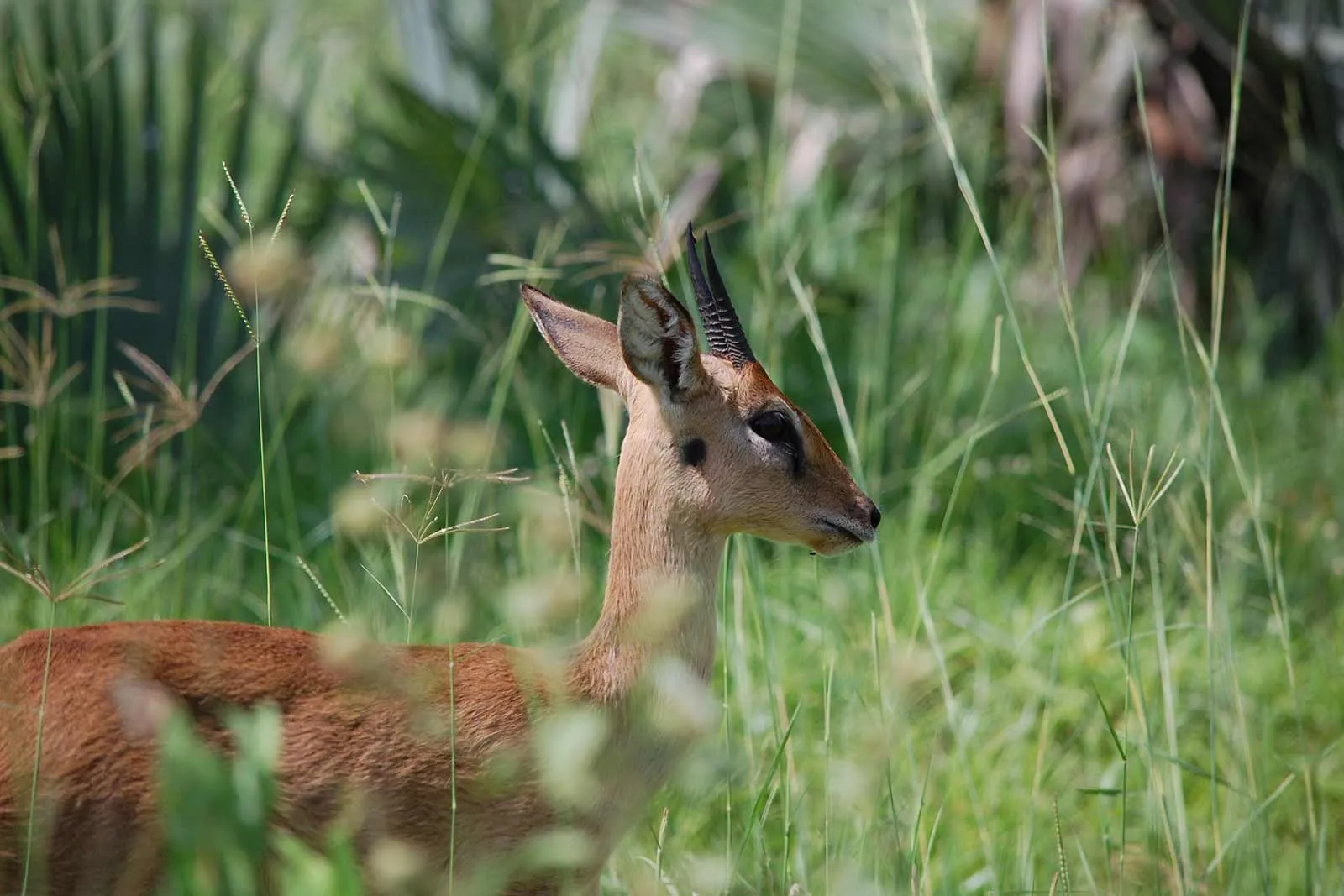
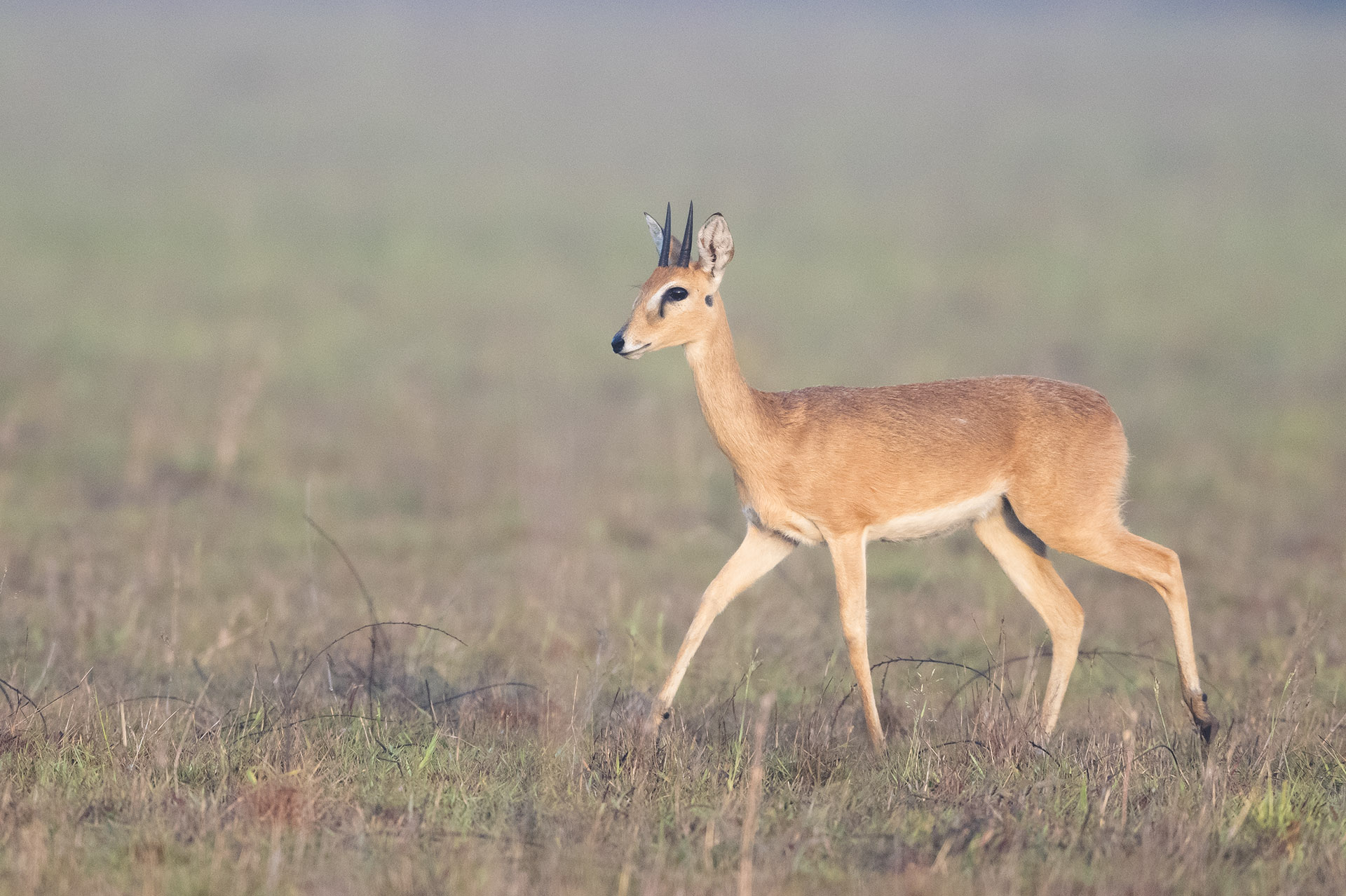
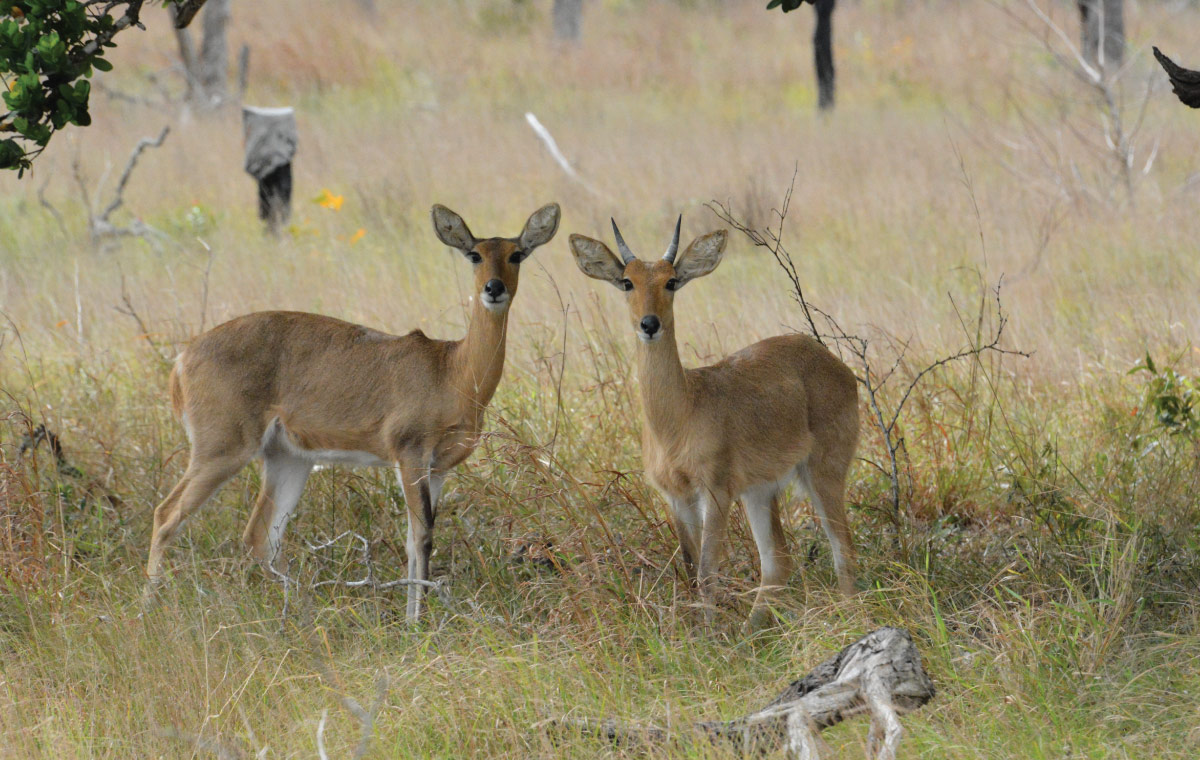
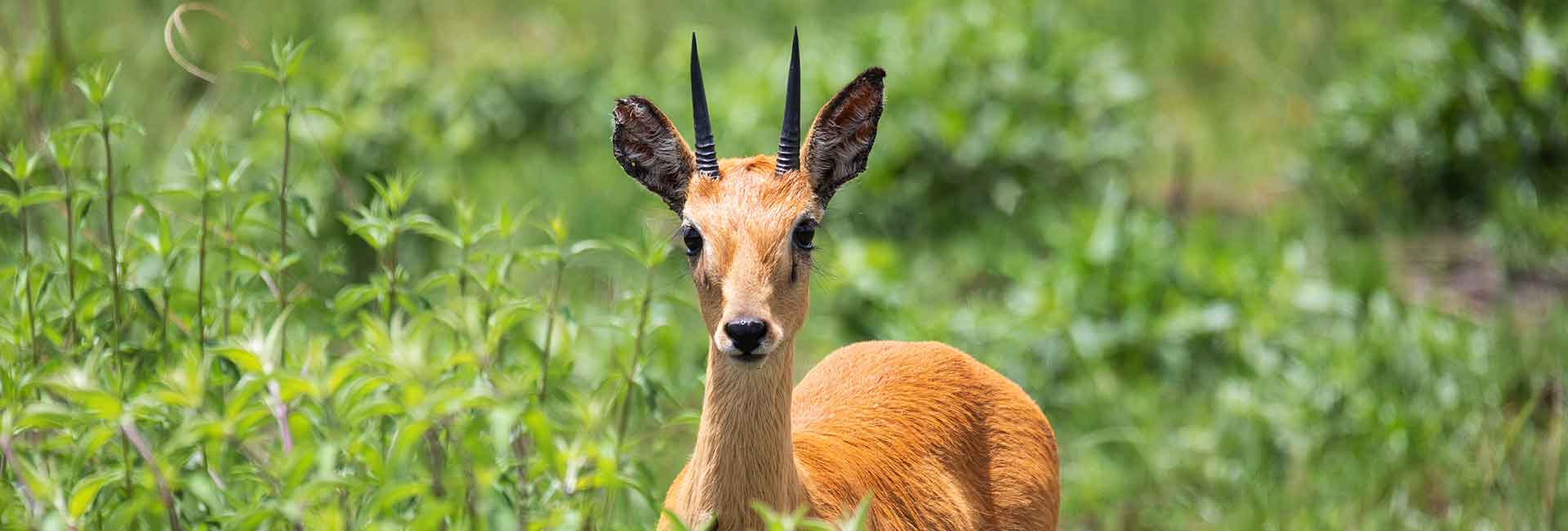


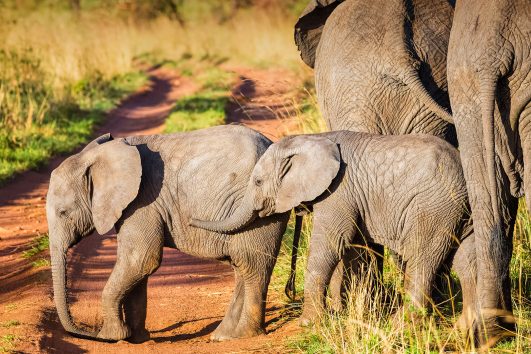
Tour Reviews
There are no reviews yet.
Leave a Review